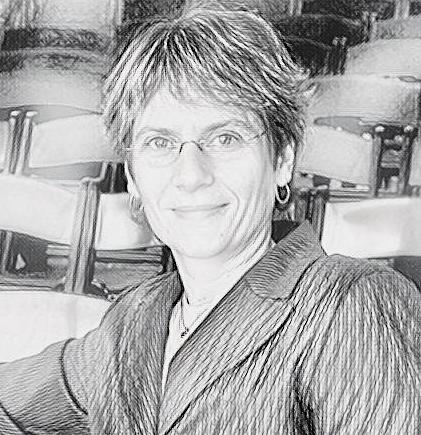Carolyn Bertozzi
A pioneer inventor in the field of biotechnology, Carolyn Bertozzi is internationally renowned for her research in the biopharmaceutical industry. Bertozzi has more than 390 publications, a prestigious election to the National Academy of Sciences, and a MacArthur Fellowship. She has been recognized by the American Chemical Society, selected for a Presidential Early Career Award in Science and Engineering, and also received the $500K Lemelson-MIT Prize in 2010.
Bertozzi grew up in the 1960s, a time where men dominated the field of science. Despite this, she always knew that she wanted to be a physicist. Her father, a physics professor at the Massachusetts Institute of Technology, had hopes that Carolyn would become a nuclear physicist when she grew up. Although she didn’t end up pursuing physics, her desire to explore science would only grow, particularly in the realm of chemistry.
Bertozzi attended Harvard University where she graduated with a BA in chemistry. She also holds a PhD in chemistry from the University of California, Berkeley. During her time in graduate school, under the mentorship of advisor Mark Bednarski, Bertozzi learned that multiple viruses could bind to sugars inside the body, which eventually led to her discovery of how sugars facilitate cell-to-cell communication. After graduate school Bertozzi joined the University of California, Berkeley faculty where she worked with students and post-doctoral fellows on research to further understand inter-cellular communication. She also created the UC Berkeley Chemical Biology Graduate Program.
In 2008, Bertozzi started Redwood Bioscience with a former graduate student, David Rabuka. Redwood Bioscience is creating novel protein drugs with properties that focus on in-house product development and is in close collaboration with other pharmaceutical and biotechnology companies.
Through her research at the University of California, Berkeley, Bertozzi discovered several innovations including the concept of biorthogonal chemical reactions. Bioorthogonal chemical reactions are unique because they don’t interact with molecules. This allows scientists to observe how proteins, sugars, and lipids behave within live cells and organisms without worrying about dangerous consequences. Bertozzi used chemical imaging to observe sugar molecules in live animals. Chemical imaging is a process done by a machine to create a visual image of everything inside the sample that is being observed, similar to an x-ray machine. She has also used this mapping technique to observe the behavior of patterns in organisms that can cause cancer.
Bertozzi has received numerous awards and honors for her work including the 2017 Arthur C. Cope Scholar Award, the 2020 Chemistry for the Future Solvay Prize, and the T.Z. Irmgard Chu Distinguished Professorship in Chemistry from UC Berkeley.
In addition to her membership to the National Academy of Sciences, Bertozzi has also been elected to the Institute of Medicine, the National Academy of Sciences, the American Academy of Arts and Sciences, and the National Academy of Inventors. She has been an Investigator of the Howard Hughes Medical Institute since 2000.
Carolyn Bertozzi is currently the Anne T. and Robert M. Bass Professor in the School of Humanities and Sciences and Professor, by courtesy, of Radiology and of Chemical and Systems Biology at Stanford University. Bertozzi is also the Baker Family Co-Director of Stanford University’s institute of Chemistry, Engineering and Medicine for Human Health (ChEM-H).
Bertozzi's research focuses on looking at changes in cell surface glycosylation associated with cancer, inflammation and infection, and applying this information for development of diagnostic and therapeutic approaches, most recently in the area of immuno-oncology.


